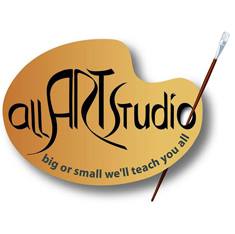Drawing
Drawing is the most fundamental means of communication for the visual artist and is both the foundation and underlying structure of almost every other form of visual art, as well as a valuable art media in itself.
Observational drawing, a measure of eye-hand coordination helps the student to develop the skills to look, translate, and express one’s observations through representational work, abstraction, or other styles and techniques.
This class will focus on perspective drawing, still life’s, architectural detail, figures, variety of sketches and a self-portrait executed in graphite, charcoal, colored pencil and pastels will be the primarily the subjects and the media in this class.
Any student is welcome here, from the complete beginner to advance. We are inviting you to awake that hidden, unexplored talent so you may find genuine fun in the world around you through the drawing.
Painting
Painting is the most expressive means of communication for the visual artist.
Different subjects and the medias will be explored in series of ongoing painting lessons. This class will be focusing on learning from basic to advance techniques of painting in soft and oil pastels, watercolors, acrylics and oils using not only paint brushes but also exploring unique ways of working with palette knifes.
Students will be introduced to the essential fundamental concepts of value, texture, light and composition as well as using different painting surfaces, such as watercolor paper, canvas on board, stretched canvas and wood.
Any student is welcome here, from the complete beginner to advance. We are inviting you to awake that hidden, unexplored talent so you may find genuine fun in the world around you through the painting.
Color & Design Theory
Because color is such a personal and subjective area, it is perhaps inappropriate to discuss it in terms of rules and theories. Nevertheless, to paint well, it is important for the students to have some understanding of how colors behave and how they relate to each other.
In this class students will learn how colors affect one another when mixed together or applied side by side, how they change under different light and how they can be used to re-create form, shape, perspective and mood. All this knowledge is important if you want color to do what you want it to do.
Additionally, the basic elements of composition and design are discussed while developing students’ technical and creative skills through the integration of both color and design. Even the simplest subject needs to be composed so that it fits effectively within the confines of the picture space so that it emphasizes the message behind the work.
More often than not, pictures impact is due to a strong, expressive design and a knowledgeable use of color.
Mixed Media & Collage
This mixed media and collage class designed to reinforce drawing and painting concepts in a variety of media such as mixing textures and paste, varnish and oil mediums, gloss, matte and gel mediums.
A variety of painting surfaces will be explored and the class will find new ways of interpreting their own subject matter with a strong emphasis on shape, value and design.
Demonstrations, critiques and personal evaluations along the way will lead the students to a more creative approach to painting. Emphasis will be placed on finding a strong abstract pattern that is the basis for a successful interpretation of any subject.
Mixed media and collage may consist of an infinite variety of materials: paper, fabric, string, paint, or found objects of discarded debris. The works may be intricate in detail and deep in meaning or playful and exploratory, but they are always a creative process – for the artist must possess the ability to recognize each item’s potential and to unite different materials into a cohesive whole.
Portfolio Development
As the portfolio takes primary seat in the admissions process, potential art students need to have a good grasp of what the portfolio entails, and more specifically observational drawing is the backbone of the portfolio.
Drawing is the most fundamental means of communication for the visual artist and is both the foundation and underlying structure of almost every other form of visual art, as well as a valuable art media in itself. It is clearly the most important part of the portfolio and should reflect some diversity in subject and media. Stillifes, interior and exterior architecture, figures, and a self-portrait executed in graphite, charcoal, colored pencil, or pastels may be included along with paintings, prints, and mixed media.
Class will focus on detailed discussion and given an advise on the contents of a portfolio, the best way to display students work, and how to strategically place the work in the portfolio. As well as the development of concepts for the personal portfolios and self-promotion materials for jobs, self-employment, or advanced education in the fields of fine arts, graphics, fashion and theatre costume design.
Upon completion of this course students will leave the class with ability to construct a portfolio of their work and self-promote their skills as an artist and/or designer with presentation album or case. They will gain an ability to observe, focus, and sustain a concentrated effort resulting in both an acceptable portfolio and valuable life skills.
